beneficial; feeds on fungi in bee nests
Proctotydaeus Berlese, 1911
Superorder Acariformes » Order Trombidiformes » Suborder Prostigmata » Infraorder Eupodina » Family Tydeidae » Genus Proctotydaeus
Proctotydaeus viator Berlese, 1911
Adult: Prodorsalprodorsal:
Pertaining to the prodorsum.
bothridial setaebothridial seta:
A modified seta inserted in a cup-like base (bothridium); forms include filiform and capitate. Also known as bothridial sensillum and trichobothrium.
present (Figs. 1, 4). CheliceraeChelicera:
Anterior, paired appendage of the body. Primary organ for food acquisition, adapted for chewing, piercing, tearing, sucking, or filtering.
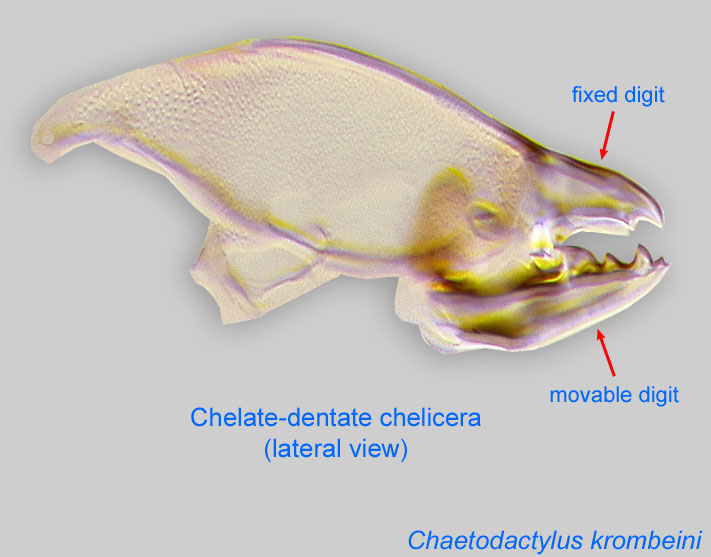 contiguous (Fig.1). Movable digit of cheliceraechelicera:
contiguous (Fig.1). Movable digit of cheliceraechelicera:
Anterior, paired appendage of the body. Primary organ for food acquisition, adapted for chewing, piercing, tearing, sucking, or filtering.
 stylet-like (Figs. 2, 3). PalpsPalp:
stylet-like (Figs. 2, 3). PalpsPalp:
Second (after chelicera) paired appendage of the gnathosoma. Has a sensory function, but may be variously modified for other functions (e.g., raptorial, attachment to host, or filtering).
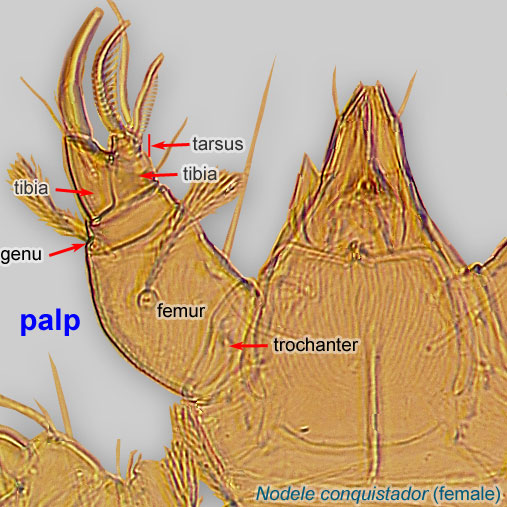 with 3 free segments (Figs. 2, 3). Palptarsus unmodified, not thumblike Figs. 2, 3). Palptarsus lacking markedly elongated setae Figs. 2, 3). Palptibia without clawlike setae (Figs. 2, 3). Oviporeovipore:
with 3 free segments (Figs. 2, 3). Palptarsus unmodified, not thumblike Figs. 2, 3). Palptarsus lacking markedly elongated setae Figs. 2, 3). Palptibia without clawlike setae (Figs. 2, 3). Oviporeovipore:
Opening of female which serves as an outlet for oviposition. In Astigmata and non-astigmatan Oribatida, situated between genital valves. In Astigmata, not to be confused with the copulatory opening (which serves for sperm intake).
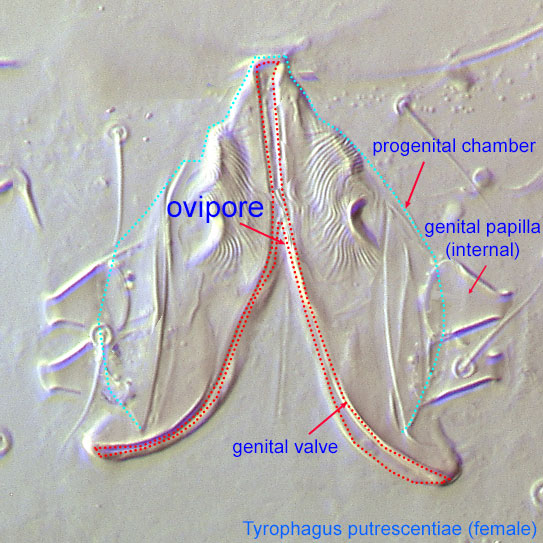 transverse (Fig. 2). Naso absent (Fig. 1). No claws on tarsustarsus:
transverse (Fig. 2). Naso absent (Fig. 1). No claws on tarsustarsus:
Terminal segment (also known as podomere or palpomere) of legs or palps. In Parasitoformes it can be subdivided into telotarsus and basitarsus.
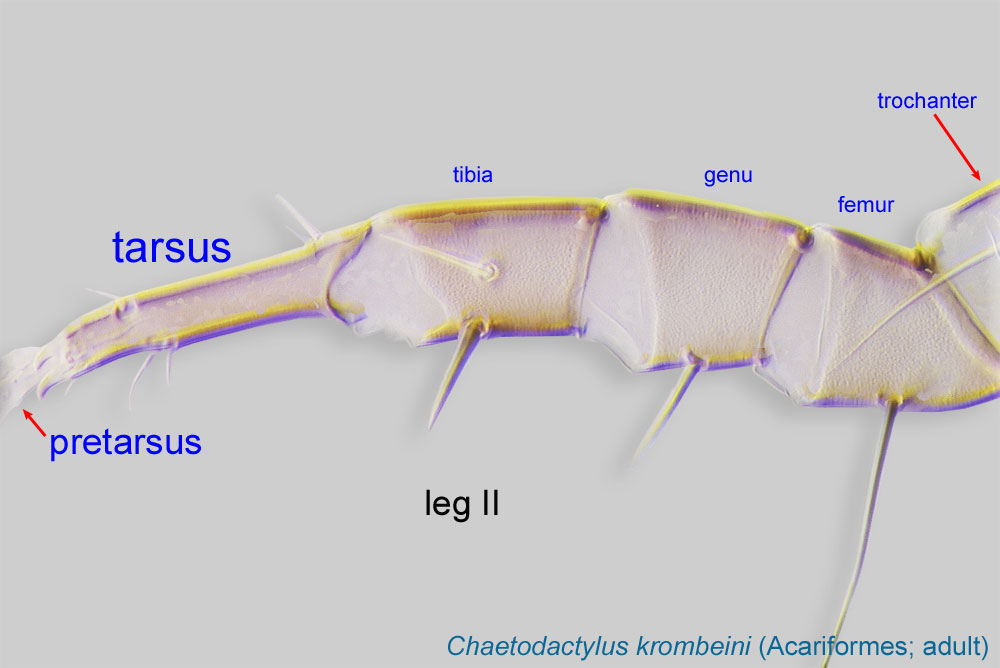 I (Figs. 2, 3). No net-like ornamentation on legs and prodorsumprodorsum:
I (Figs. 2, 3). No net-like ornamentation on legs and prodorsumprodorsum:
Dorsal surface of propodosoma.
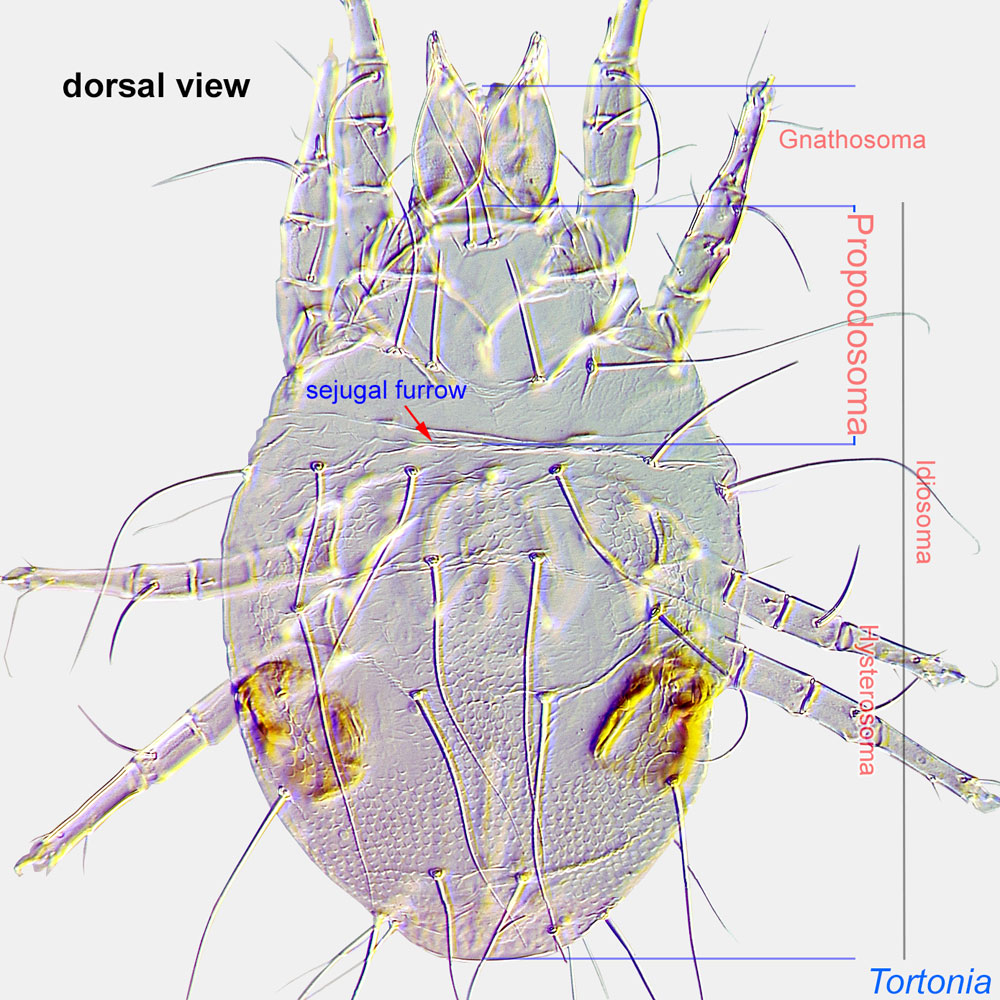 (Fig. 1). No trichobothriatrichobothrium:
(Fig. 1). No trichobothriatrichobothrium:
Modified seta that can be distinguished from true seta by its distinct large socket (complex cup-like cavity), and often, shape (which may be filiform, ciliate, pectinate, or thickened or clubbed). Present in many Acariformes (except Astigmata) and Opilioacarida (Parasitiformes). When paired and situated on the propodosoma, termed "prodorsal."
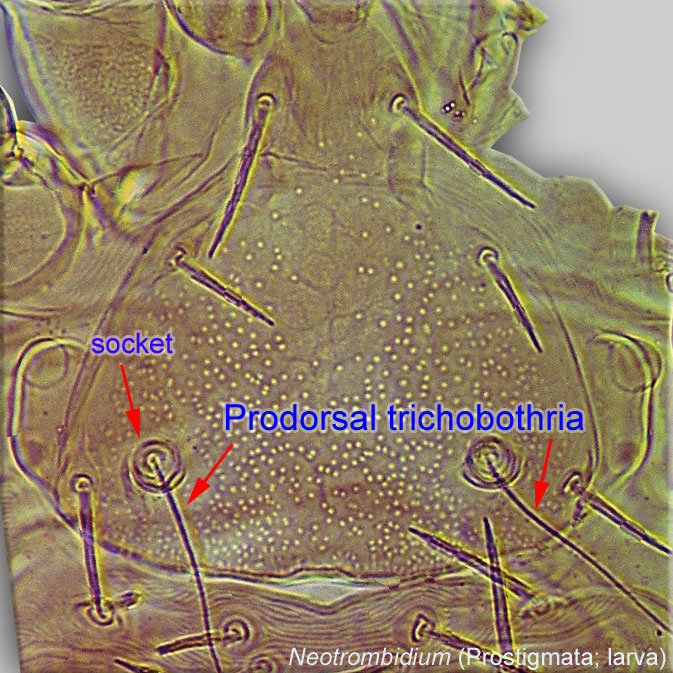 on tibiatibia:
on tibiatibia:
Leg or palp segment (also known as podomere or palpomere) between tarsus and genu.
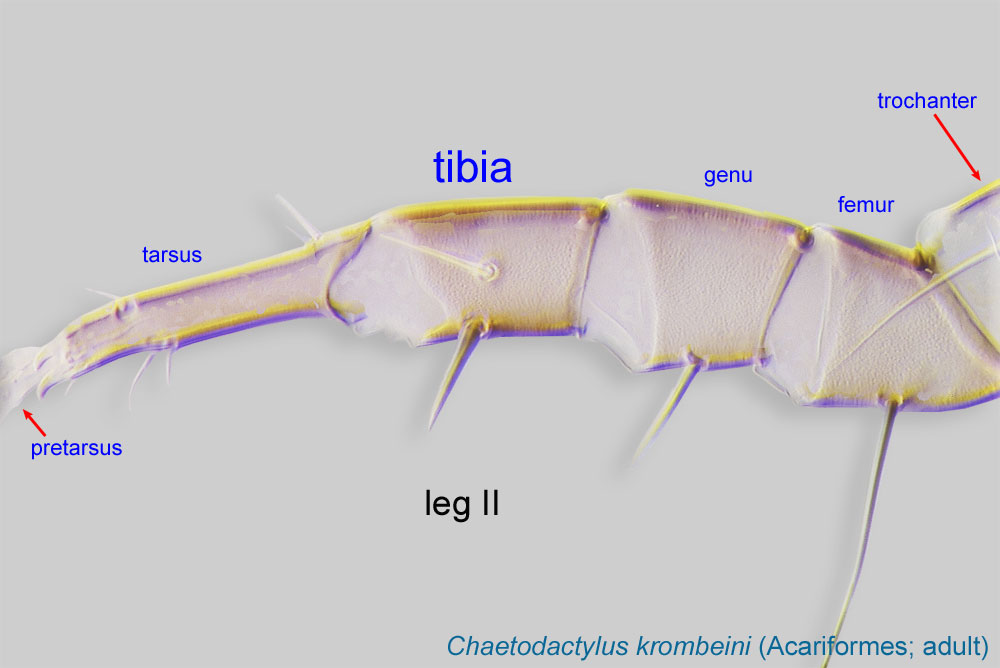 IV (Fig. 1).
IV (Fig. 1).
A dichotomous key is available in Kaźmierski, 1998Kaźmierski, 1998:
Kaźmierski, A. 1998. A review of the genus Proctotydaeus Berlese (Actinedida: Tydeidae: Pronematinae). Acarologia.39: 33-47..
The subgenus Neotydeolus (the only subgenus of Proctotydaeus containing bee-associated mites) is distributed in the Neotropical region.
The mite subgenus Neotydeolus occurs on stingless bees (Meliponini), genera Melipona, Partamona, and Scaptotrigona.
permanent permanent:
associated exclusively with bees or their close relative, wasps; cannot live without these hosts
(subgenus Neotydeolus)
Subgenus Neotydeolus
This genus includes 17 species grouped in four subgenera (see below). Of them, only members of the subgenus Neotydeolus (with 3 species) have been found on bees. All three species of Neotydeolus are specific to stingless bee nests, where they feed on fungi. The presence of Proctotydaeus (Neotydeolus) therapeutikos in nests of Scaptotrigona postica decreases the loss of the bee brood from 50% to 3% in the nest (Flechtmann and Camargo, 1979Flechtmann and Camargo, 1979:
Flechtmann, C. H. W. amp; C. A. Camargo, De 1979. Acari associated with stingless bees (Meliponidae, Hymenoptera) from Brazil. In Proceedings of the 4th International Congress of Acarology, 1974, ed. E. Piffl, 315-319. Budapest: Académiai Kiadó.).
There are three other subgenera (listed with number of species in parentheses): Proctotydaeus (4); Proctotydulus (6); and Oriolella (4). Species of the nominal subgenus Proctotydaeus are associated with locusts (Acrididae, Orthoptera). The subgenus Oriolella includes species that have been found in barn straw, nests of hawks and owls, or on beetles (Coleoptera: Ipidae and Cucujidae). Mites of the subgenus Proctotydulus have been found on different plants, straw, bark beetles (Curculionidae: Scolytinae), or on noctuid moths (Lepidoptera: Noctuidae) (Kaźmierski, 1998Kaźmierski, 1998:
Kaźmierski, A. 1998. A review of the genus Proctotydaeus Berlese (Actinedida: Tydeidae: Pronematinae). Acarologia.39: 33-47.; Khaustov, 1997Khaustov, 1997:
Khaustov, A. A. 1997. Two new species of mites of the genus Proctotydeus (Acariformes, Tydeidae) from Crimea and North Eastern Ukraine. Vestnik Zoologii.31: 90-93.).